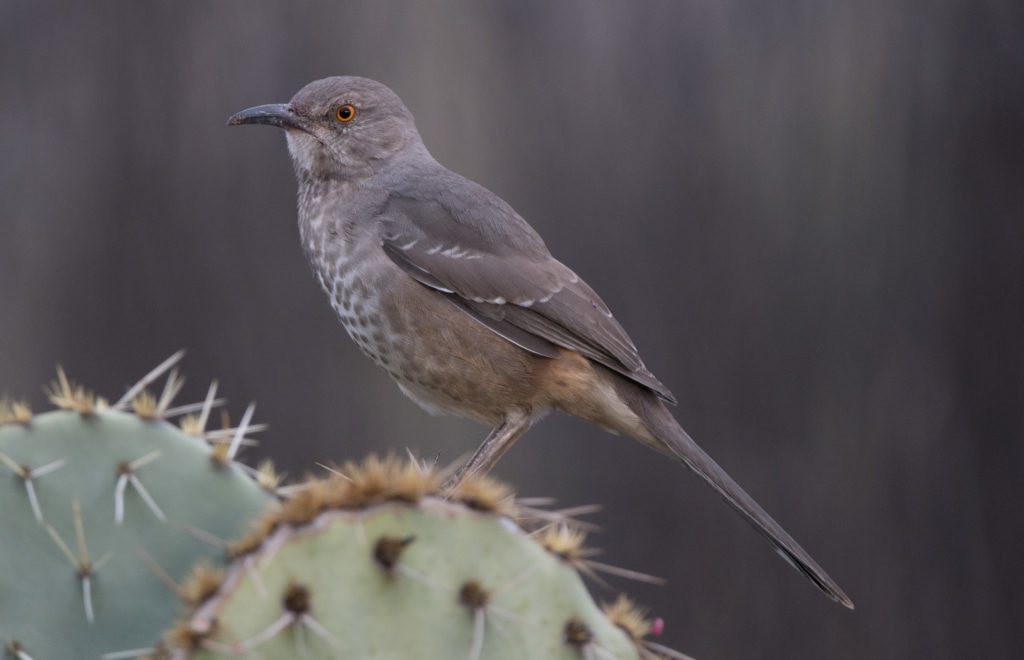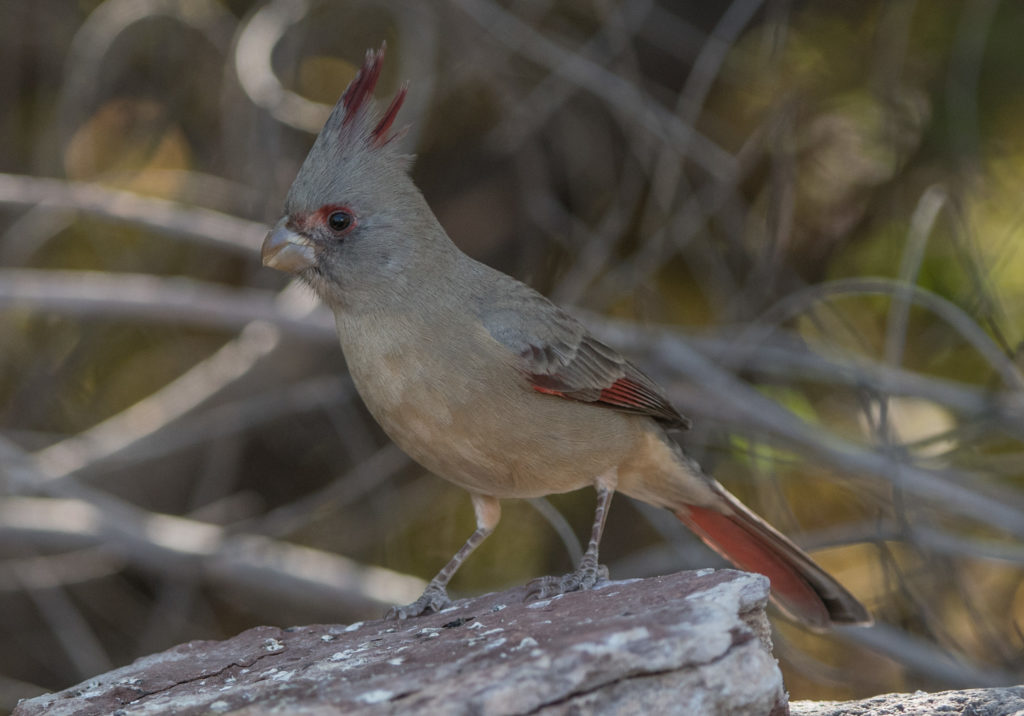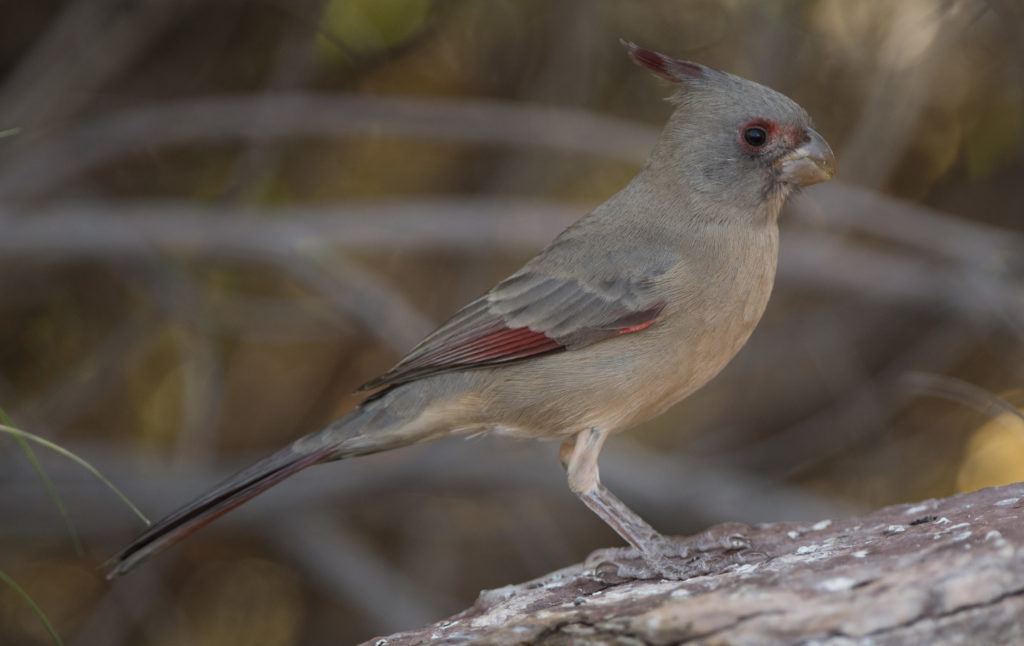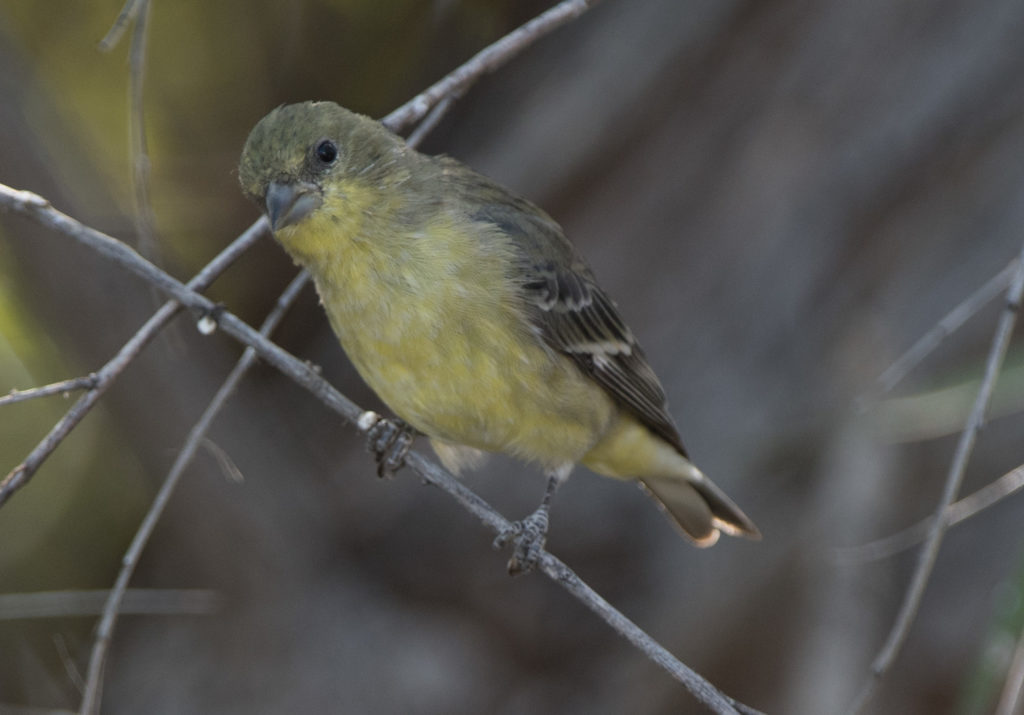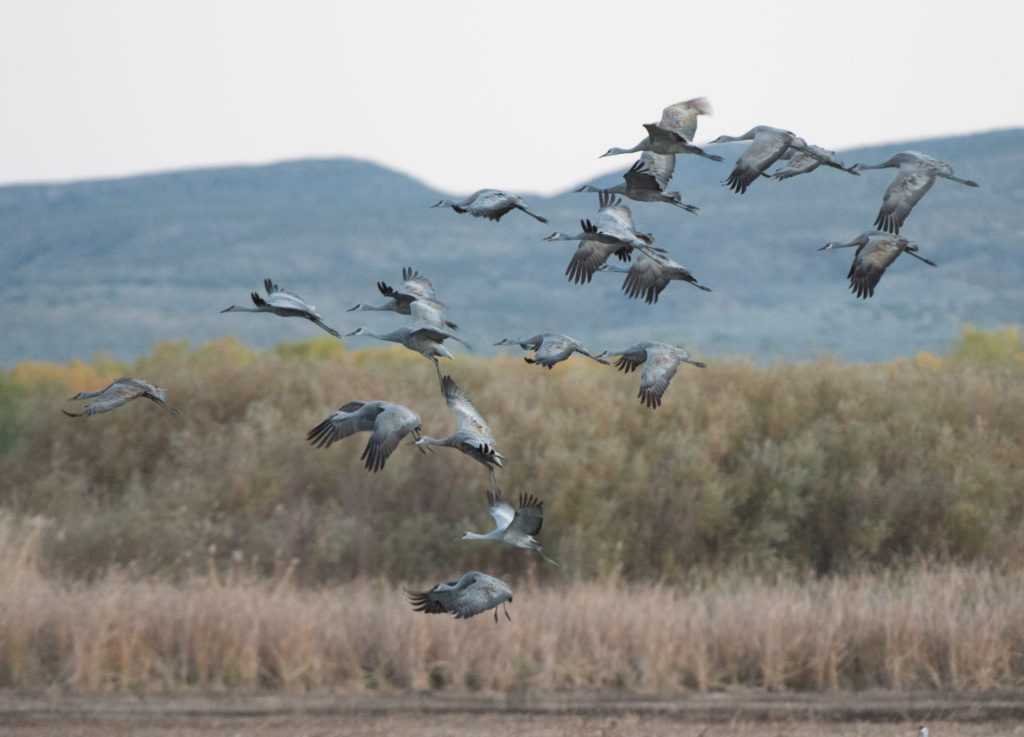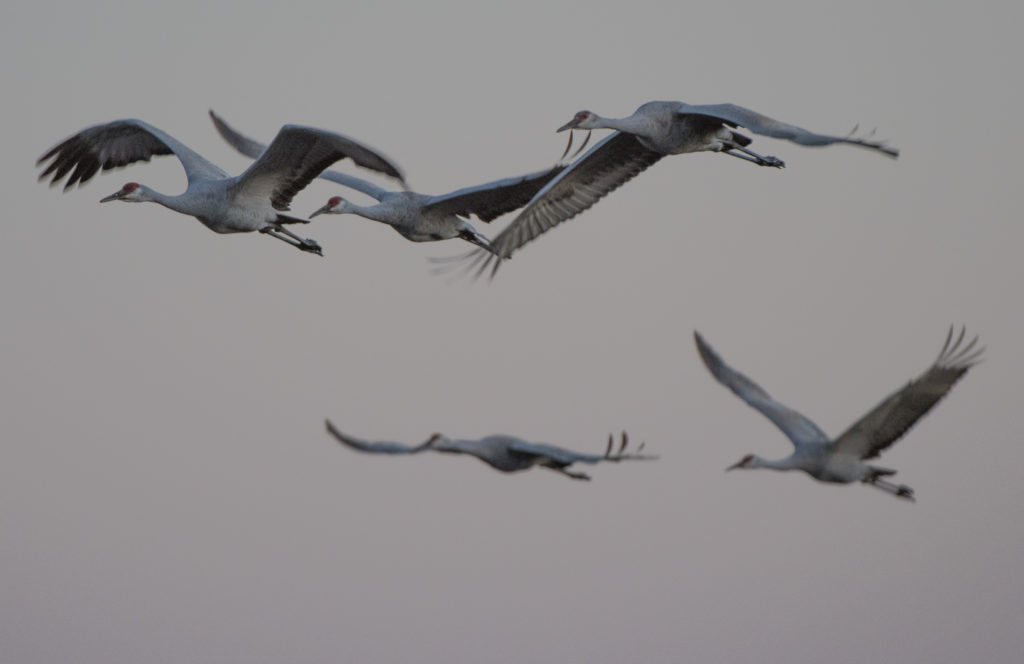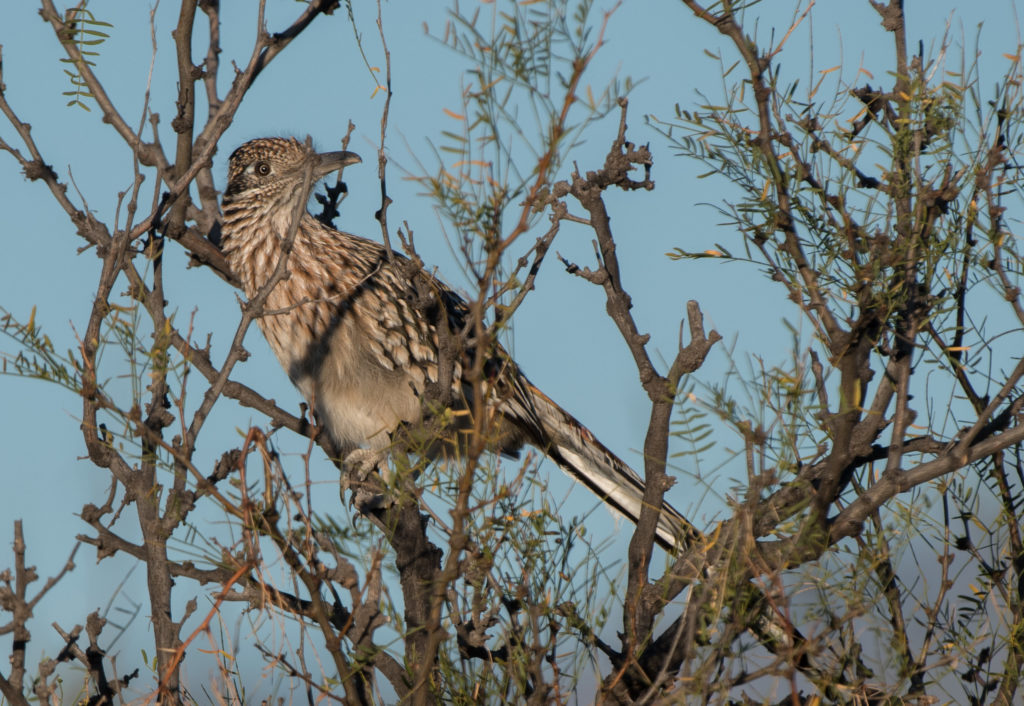My wife and I took what has become an annual trip to New Mexico in late October. We were a little earlier than we had been in past years, in part in an effort to avoid the Festival of the Cranes held in the Bosque del Apache NWR that attracts hundreds of visitors in November. In past years preparations for the festival have interrupted our birding activities. This year only a couple of hundred Sandhill cranes, Snow geese and waterfowl had arrived by the time we did, so while those birds weren’t our primary focus things were different in a somewhat negative way.
On our first morning at the refuge this Curve-billed thrasher popped up in the cactus garden and generously offered several photo opportunities. The light wasn’t good but it was our only view of the thrasher in three days of birding the area.
The refuge has an area near the HQ that is very attractive to the birds, but unfortunately historically the refuge personnel haven’t recognized the photographic possibilities and almost everything they do works against photographic opportunities. As someone who has landscaped our yard for birding photography, I find my visits somewhat frustrating. Nevertheless, I do what I can even with the lack of consideration stacked against me.
Some of the more interesting birds in the HQ area that were attracted to water were the Pyrrhuloxia (females pictured below). (There’s going to be a spelling and pronunciation test on the name, so study it carefully!) The females appear very similar to female Northern cardinals. On a couple of occasions I observed a male accompanying two females, but the females were the only ones that came to the water feature and I never got the opportunity on this trip to photograph a male.
At the same water feature I photographed visits by goldfinches, both American and Lesser. I’m a little uncertain which species the one appearing below is since the females of both species seem very similar in the winter.
There were a number of White-winged doves around the HQ parking lot where this one was photographed. These birds continue to expand their range. When I first began birding the ones we had in Texas were confined to the southern portion of the state. They are now almost everywhere we travel in the west, including in Skagit County, WA.
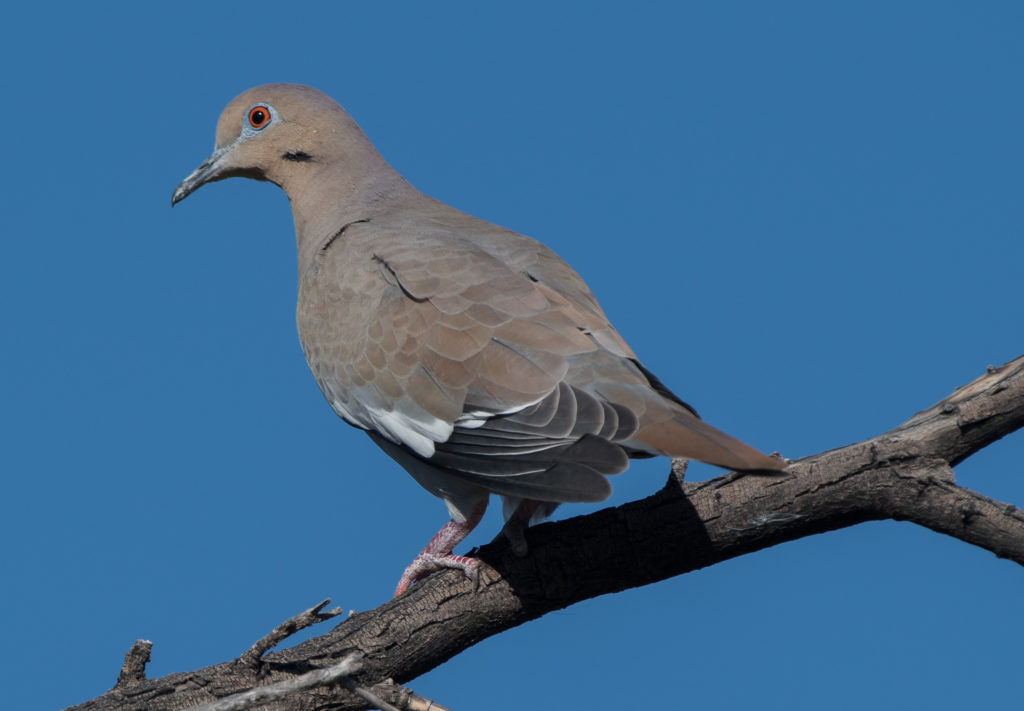
The real attraction for many birders, other than the beautiful sunrises and sunsets that occur there, are the Sandhill cranes. By mid-November there are thousands on the refuge. They spend the night in shallow, flooded farm fields so that they have warning of coyotes and other predators approaching. Around sunrise most fly off en mass to surrounding farm fields to feed during the day. Late in the afternoon they began returning to the refuge in small groups, offering exceptional photographic opportunities.
The morning of our second day I managed a few photos of a Greater roadrunner which had climbed a small scrub tree for a better vantage point. We saw several at the refuge but this is one of my better photos this year.

